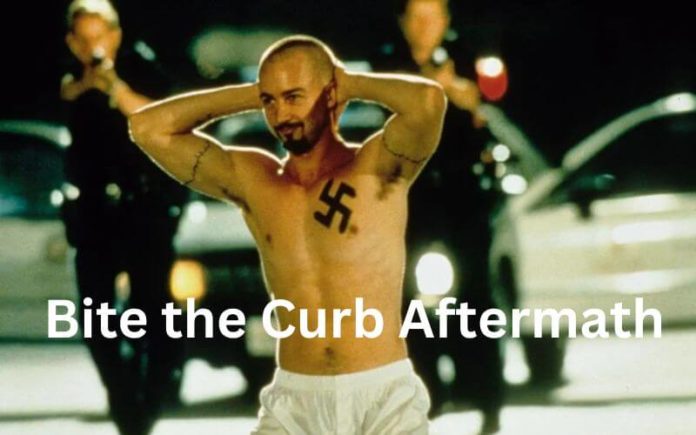In recent years, a disturbing trend has emerged among teenagers: bare-knuckle fights, also known as fight clubs or knockout games. This alarming phenomenon has been fueled by various factors, including the influence of social media, boredom, and a lack of positive role models.
One particularly troubling aspect of this trend is the glorification of extreme violence, exemplified by the notorious “Make Him Bite the Curb” video. This blog post will delve into the origins and consequences of this disturbing act, as well as the broader impact of glorifying violence among youth.
Where is Curb Stomping From?
The act of curb stomping, also known as “making someone bite the curb,” has its origins in violent street fights and gang conflicts. However, it gained wider notoriety after being featured in films like American History X, where a neo-Nazi character brutally forces another man to bite the curb before stomping on his head. This graphic depiction of violence has since been imitated in real life, with devastating consequences.
What Happens When You Bite the Curb?
When a person is forced to bite the curb and then stomped on the back of the head, the results are catastrophic. The force of the stomp can cause the victim’s teeth to shatter, their jaw to break, and their skull to fracture.
In some cases, the impact can even sever the spinal cord, leading to paralysis or death. The physical and psychological trauma inflicted by this act is immense and can have lifelong repercussions for the victim.
Is Curb Stomp Banned?
Due to the extreme nature of curb stomping, it is considered a form of aggravated assault and is illegal in most jurisdictions. In the United States, curb stomping can be prosecuted as a hate crime if it is motivated by bias against the victim’s race, religion, or other protected characteristics. Despite the legal consequences, the act continues to be glorified in some circles, particularly among those who seek to intimidate or harm others.
What Damage Does Curb Stomping Do?
Beyond the immediate physical trauma, curb stomping can cause a range of long-term health problems for survivors. These may include chronic pain, difficulty eating and speaking, and permanent disfigurement.
The psychological impact can be equally devastating, with many victims experiencing post-traumatic stress disorder (PTSD), anxiety, depression, and a profound sense of vulnerability. The road to recovery is often long and difficult, requiring extensive medical treatment and mental health support.
Impact and Controversy Surrounding its Portrayal:
The portrayal of curb stomping in popular media has been a subject of intense debate. While some argue that depicting such acts serves to raise awareness about the brutality of violence, others contend that it glorifies and normalizes such behavior.
The “Make Him Bite the Curb” video, in particular, has been widely condemned for its graphic content and the way it has been shared and imitated online. The spread of such videos raises serious concerns about the impact of violent content on impressionable young minds.
Psychological Impact on Viewers
Exposure to violent content, whether in films, video games, or online videos, can have a profound psychological impact on viewers, particularly teenagers whose brains are still developing. Studies have shown that repeated exposure to graphic violence can desensitize individuals to its real-life consequences and increase aggressive thoughts and behaviors. The glorification of acts like curb stomping can contribute to a culture that normalizes and even celebrates extreme violence, with potentially disastrous results.
Final Thoughts on the Lasting Impact of Bite the Curb
The “Bite the Curb” phenomenon is a disturbing reminder of the power of media to influence young minds and the urgent need to address the glorification of violence in our society. While it is important to raise awareness about the consequences of such acts, we must also be mindful of how we depict and discuss them.
Ultimately, the lasting impact of “Bite the Curb” will depend on our collective willingness to confront the root causes of youth violence and promote a culture of empathy, respect, and nonviolence.
Conclusion
The rise of bare-knuckle fights and the glorification of acts like curb stomping among teenagers is a deeply troubling trend that demands our attention and action. By understanding the origins and consequences of this phenomenon, we can work together to create a safer, more compassionate society for all.
This will require a concerted effort from parents, educators, community leaders, and policymakers to address the underlying factors that contribute to youth violence and provide young people with the support and guidance they need to thrive. Only by confronting this issue head-on can we hope to build a future in which violence is not glorified but actively discouraged and condemned.

